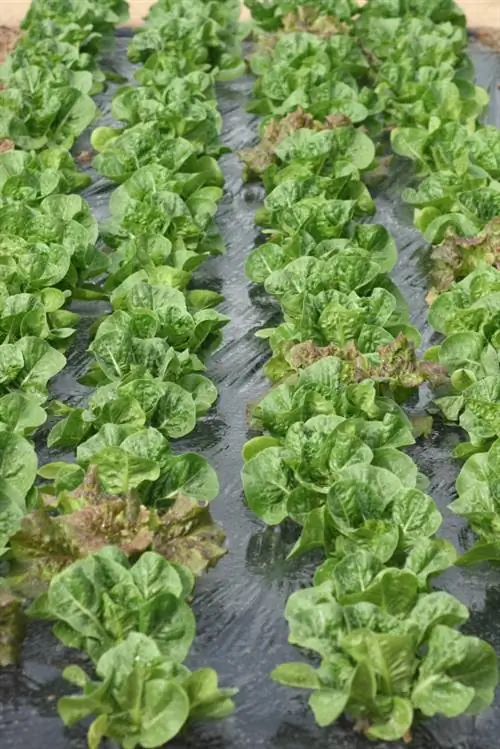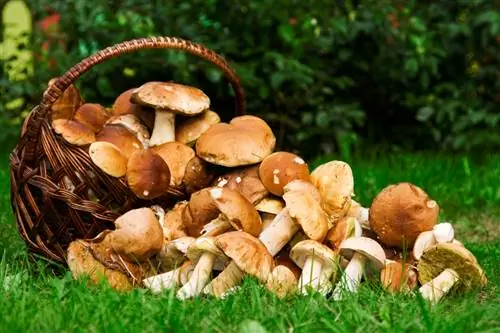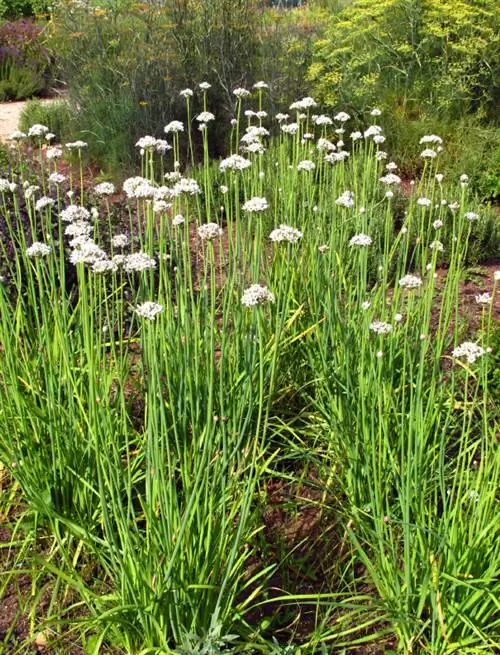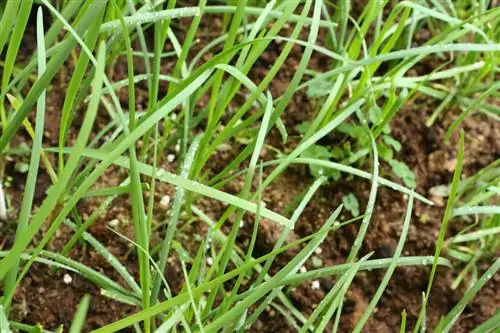- Author admin [email protected].
- Public 2023-12-16 16:46.
- Last modified 2025-01-23 11:20.
Chives have an aromatic, leek-like taste - no wonder, as the culinary herb belongs to the same plant family as onions, leeks, etc. - and also contains many vitamins. The tender stalks of the leek plant are usually used fresh and raw, but you can also freeze them or preserve them in another way.
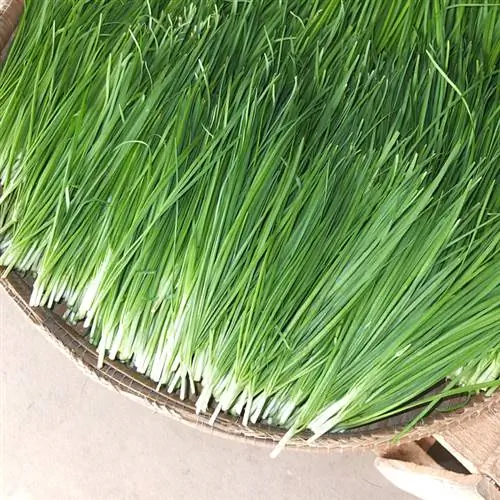
How do you harvest chives correctly?
Chives are best harvested early in the morning by cutting the stems about 2-3 cm above the ground. Use a sharp knife or scissors to avoid bruising the shoots. Make sure to systematically thin out the plant and use or freeze the harvested product promptly.
Time and tools
In principle, the stalks of chives can be harvested all year round. Depending on the variety, there are chives with fine, tender and thicker shoots. The different types of chives also differ in terms of taste. It is best to harvest the stalks early in the morning, as this is when they contain their highest concentration of essential oils and therefore have a particularly strong aroma. You can use a sharp and clean knife or scissors to cut - the only important thing is not to squeeze or injure the shoots unnecessarily.
Cut correctly
Cut the stems about two to three centimeters above the ground to make it easier for the plant to produce new shoots. However, some shoots are split several centimeters above the ground and have virtually doubled in size. If possible, cut these double shoots above the split so that the two shoots are retained and can continue to grow. When harvesting, make sure that you do not cut off the shoots at random, but instead systematically thin out the plant - the more light and air the individual stalks have, the better the whole plant will thrive. You should use the harvested chives as soon as possible or freeze them fresh. If this is not possible, place the whole stalks in a glass of water - this way the chives will last for a few days.
Can you use flowering chives?
Flower-bearing chive stalks are hard, taste very bitter and are therefore inedible. For this reason, many people cut off emerging flower stalks as quickly as possible so that they do not reach maturity. You can prevent the chives from blooming by harvesting them regularly - but to do this you should regularly cut all stalks down to three centimeters above the ground.
Flowers and buds are edible
However, this is actually not necessary, because both the distinctive flowers and the still tightly closed buds of the chives are edible. The buds can be made into false capers by soaking them in vinegar and s alt. The flowers are wonderful for decorating soups and salads, but can otherwise be used in the same way as chive shoots. They have a strong, quite spicy aroma, which is, however, quite sweet at the same time - due to the high nectar content. You can wait for the flowering period, harvest the flowers and buds and then cut the stalks down thoroughly.
Tips & Tricks
You can easily propagate planted garden chives: just let the plant bloom and wait until it has formed its seed heads. Most chives sow themselves and you don't have to do anything.


